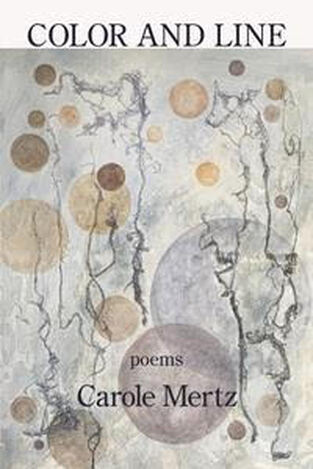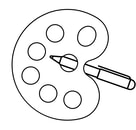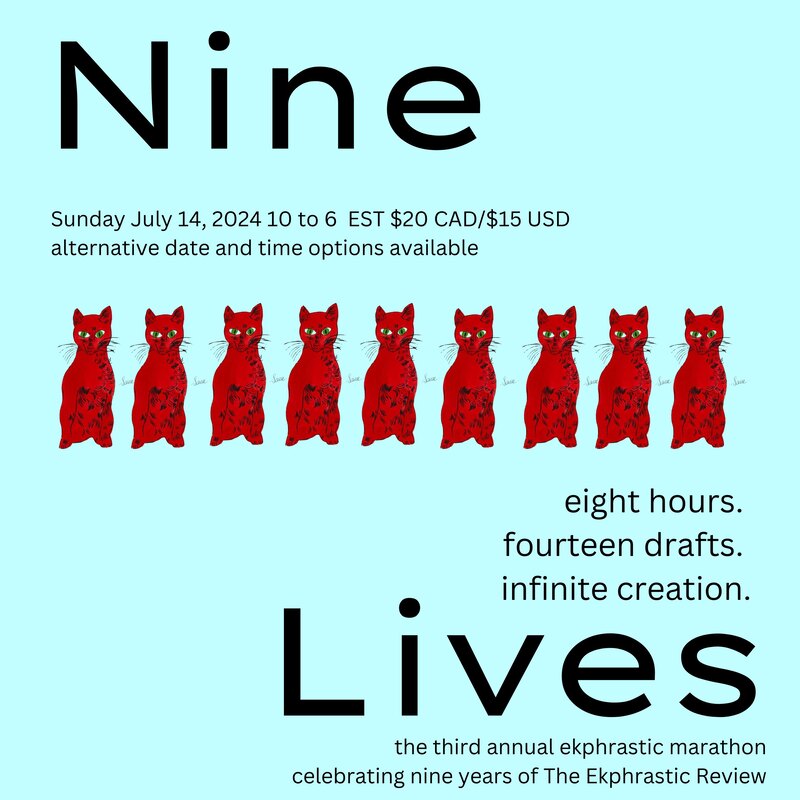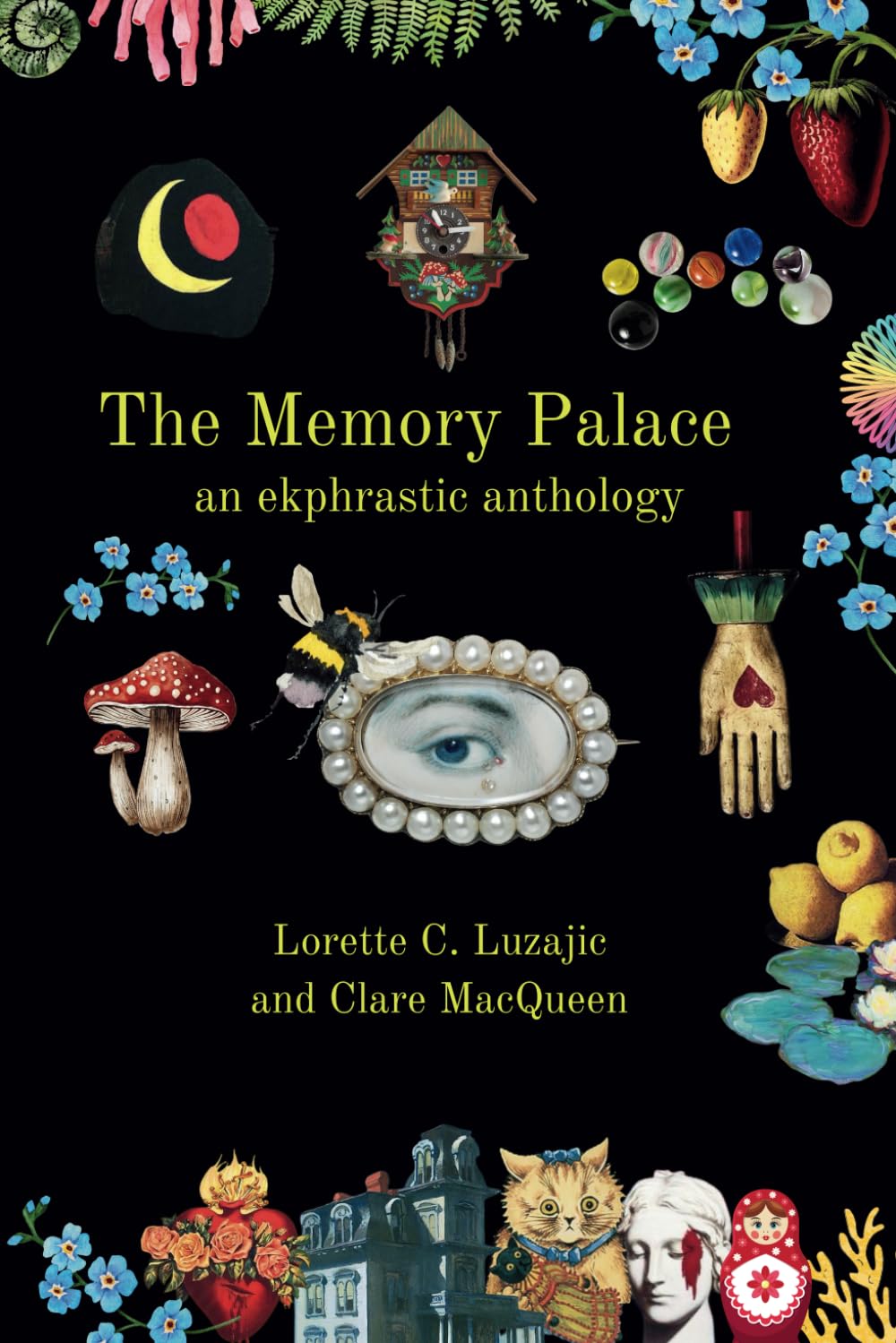|
Color and Line poems by Carole Mertz Kelsay Books (January 2021) Click here or on image to view or purchase at Amazon. Smallwood: When did you begin writing poetry? Do you write fiction, nonfiction? Mertz: I began writing fiction and nonfiction 15 years ago when I wrote the first third of a novel about a Vietnam vet. (My main character stays with me and still intrigues me.) I started on poetry about 10 years ago. Writing and reading poetry is my favourite genre, though I regard essay as a more strenuous and more commendable endeavor. Smallwood: What attracted you to ekphrastic poetry, which can be traced back to the days of Homer? Please include a definition and some advice for others wishing to write it: Mertz: I submitted my first piece to The Ekphrastic Review in the fall of 2018. Drawn to Lorette Luzajic’s wonderful site, I soon began responding to her bi-monthly challenges. She offers a given photo of the artwork, and one must respond within two weeks. For me, these challenges became an exciting new opportunity for self-expression. Somehow this approach freed something in my writing style. Poets, young or old, will be rewarded by visiting this inspiring site. I’m aware of the definition of ekphrasis derived from the Greek as a "writing out” or better, an “out-writing.” For me it means interpreting what I see in the visual art or recording my emotional responses. Luzajic invites the writer to study the painting, to free-associate, to research the era or influences of the artist, or simply to have fun interpreting and inscribing what you see. Some poets write in the person of the painter, some address the painter as if living; such a variety of responses come forth. This, too, is stimulating, to see your piece next to the responses of others, to consider forms they chose, whether essay, rhyme, or prose poems, whether shorter or longer descriptions. If desired, at The Ekphrastic Review one can also submit an artwork of one’s choice, accompanied by your ekphrasis. I did this with my writing on “Lapin Agile,” an extant cabaret in Montmarte with its interesting history. Smallwood: Why is ekphrastic writing important to you? Mertz: I think it strikes a deep chord in me. When I travelled in Europe as a student, I felt my world expanding as I viewed the great artworks we students viewed, visiting museums, cathedrals, galleries, etc. A trip to Italy, at that time, remains a highlight of my life. I can recall the excitement, for example, of discovering a tiny painting by Fra Angelico hung in an alcove in a monastery where we students stayed one night just outside of Siena. These fine arts interests were sparked by my studies, also by the fact that I had three sisters, two of whom were juried artists who inspired me. It’s only now, decades later, that I’ve experienced the joy of valuing their artwork and others’ works through written expression. Reading Barnes’s Keeping an Eye Open, Chevalier’s Girl with the Pearl Earring, and White’s Travels in Vermeer, was also a stimulus. Smallwood: Besides the cinquain, do you use other formal poetry in the 42 poems composing Color and Line? Mertz: The collection includes several other forms: a haibun, several haiku, a meta-poem, a hymn, several surreal poems, and one or two rhymed or written in strict meter. In the short poem “Waiting,” I decided to use litotes as part of the poetic form. Smallwood: How do you select writing a poem in prose, formal style, or another? Mertz: If writing ekphrastic, I try to capture quickly my first impressions. I do very little editing. If I sense rhymes forming, I incorporate them. For better or worse, I value the immediacy of my response. I find if I work too hard trying to make a poem fit a form, I’ll lose the poem. I do work a lot, however, with line breaks and how a poem appears on a page, once completed. I love enjambment when I can get it to work effectively. Overall, I’m a “water colourist,” not an “oil painter.” Smallwood: Do you have favourite paintings you selected in Color and Line? Mertz: I like the formality of Sofanisba Anguissola’s The Chess Game. (I’d die for a name like hers!) Who today would play chess dressed in stiff up-to-the-neck brocades, as her ‘learned ladies’ did? But I love the painting for the way it elevates the mind of females. She painted in a milieu dominated by men. Even with a father who was an artist, she had difficulty establishing support and a following. Yet she persisted and succeeded, for we know her and her works to this day. Many of her self-portraits have also survived the 500 years. Another painting, Franz Kline’s Vawdavitch, returned me to a segment of my own past. In the 60s a lot of injustices were occurring—from civil rights abuses, to the Vietnam War, “flower children”, etc. Remembering the first time I saw a Jackson Pollock up close triggered something that showed me how to relate to Kline in a personal way. His indignation was far different from mine, but his works were created in the era I alluded to. Pippin’s The Domino Players of 1943 pleases me for its beautifully balanced blacks, reds, and whites. Though it depicts deep poverty, it presents to me a scene of deep familial harmony; hence its title, “As a Father Shows Compassion to His Children.” Smallwood: Why are some poems not single spaced such as, “A Dark and Rainy Night”? Mertz: I think there was no conscious reason. But the way “Lethe’s Slim Threads Caught” is laid out echoed some of the geographic space I envisioned. The layout seemed to enlarge the air, as the persona clutched after the taunting creatures. Smallwood: The cover by Nancy Boileau is so fitting. Was it especially created for Color and Line? Mertz: Last July Boileau was in a highly creative phase. She kept sharing photos of works she’d produced. I became interested in them as possible book covers, but I had to call her to see if her “Music of the Spheres II” was done specifically for my book. She said no. But she readily set the piece aside for me. Smallwood: Are you working on another collection? Mertz: Nothing in the works, yet. But I’d like it to be a book of essays. I suspect it will be years in the making. Smallwood: Do you have sites about you to share? Mertz: Viewers can see my writer profile at Poets and Writers: http://www.pw.org/directory/writers/carole_mertz I haven’t set aside time for my website which is still in the design stage. ** Carole Mertz is a graduate of Oberlin College with a concentration in fine arts. The widely respected Midwestern writer is Book Review Editor at Dreamers Creative Writing, a Member of the Prize Nominations Committee at The Ekphrastic Review, and a reader for Women’s National Book Association. Carole judged (in formal verse) the 2020 Poets and Patrons in Illinois International Poetry Contest. Color and Line is a collection of ekphrastic poems inspired by works of art on canvas. Carol Smallwood, MLS, MA, Marquis Lifetime Achievement Award recipient, is a literary reader, judge, interviewer; her 13th poetry collection is Thread, Form, and Other Enclosures (Main Street Rag, 2020)
0 Comments
Your comment will be posted after it is approved.
Leave a Reply. |
The Ekphrastic Review
COOKIES/PRIVACY
This site uses cookies to deliver your best navigation experience this time and next. Continuing here means you consent to cookies. Thank you. Join us on Facebook:
July 2024
|




